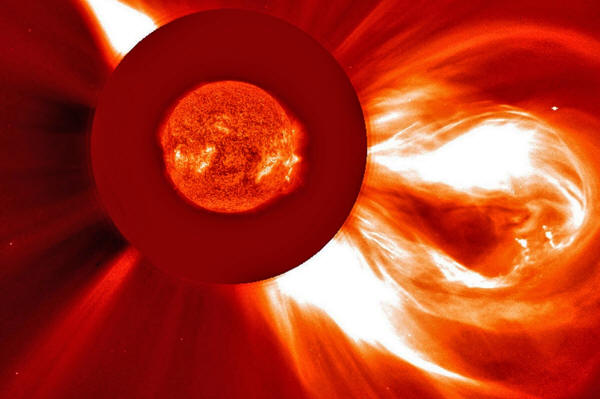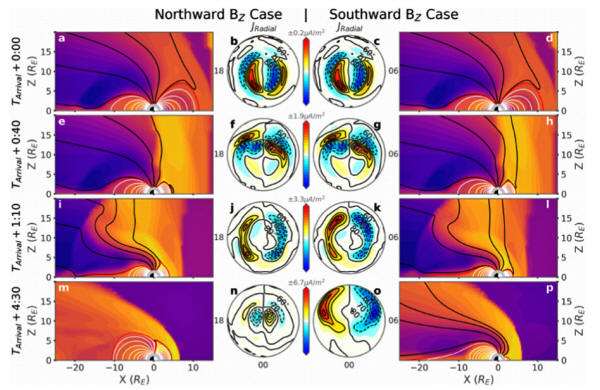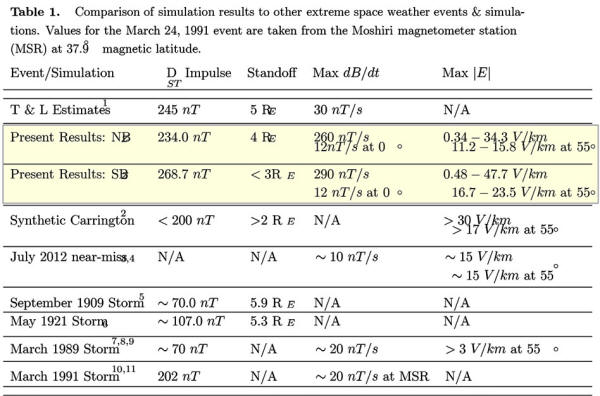|
You've heard of a "perfect storm." But what about a perfect solar storm?
A new study (Numerical Simulations of the Geospace Response to the arrival of an Idealized Perfect Interplanetary Coronal Mass Ejection) just published in the research journal Space Weather considers what might happen if a worst-case coronal mass ejection (CME) hit Earth.
Spoiler alert:
For years, researchers have been wondering, what's the worst the sun could do?
In 2014, Bruce Tsurutani (JPL) and Gurbax Lakhina (Indian Institute of Geomagnetism) introduced the "Perfect CME."
None of this is fantasy...
The Solar and Heliospheric Observatory (SOHO) has observed CMEs leaving the sun at speeds up to 3,000 km/s. And there are many documented cases of one CME clearing the way for another.
Perfect CMEs are real...
Using simple calculations, Tsurutani and Lakhina showed that a Perfect CME would reach Earth in only 12 hours, allowing emergency managers little time to prepare, and slam into our magnetosphere at 45 times the local speed of sound.
In response to such a shock, there would be a geomagnetic storm perhaps twice as strong as the Carrington Event of 1859.
Sounds bad?
Turns out it could be worse...
In 2020, a team of researchers led by physicist Dan Welling of the University of Texas at Arlington took a fresh look at Tsurutani and Lakhina's Perfect CME.
Space weather modeling has come a long way in the intervening 6 years, so they were able to come to new conclusions.
The team found that geomagnetic disturbances in response to a Perfect CME could be 10 times stronger than Tsurutani and Lakhina calculated, particularly at latitudes above 45 to 50 degrees.
A key result of the new study is how the CME would distort and compress Earth's magnetosphere.
(Note: Welling's group stopped short of modelling the superfountain.)
For specialists, Table 1 from Welling et al's paper compares their simulation of a Perfect CME impact (highlighted in yellow) to past extreme events:
You don't have to understand all the numbers to get the gist of it.
Now for the good news:
Angelos Vourlidas of Johns Hopkins University has studied the statistics of CMEs.
He notes that SOHO has captured only two CMEs with velocities greater than 3,000 km/s since the start of operations in 1996.
Speed isn't the only factor, however.
It all adds up to something that doesn't happen every day.
As Welling et al conclude in their paper,
|





